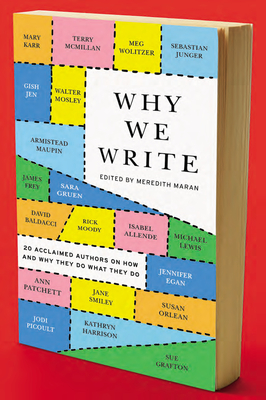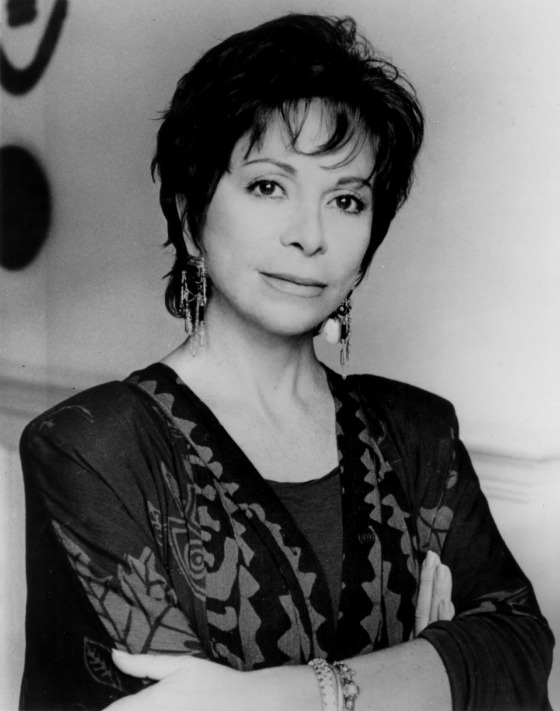http://embed.ted.com/talks/isabel_allende_tells_tales_of_passion.html
Order to the Chaos of Life: Isabel Allende on Writing
by Maria Popova
“Show up, show up, show up, and after a while the muse shows up, too.”
 Literary history is ripe with eloquent attempts to answer the ever-elusive question of why writers write. For George Orwell, it resulted from four universal motives. Joan Didion saw it as precious access to her own mind. ForDavid Foster Wallace, it was about fun. Joy Williams found in it a gateway from the darkness to the light. For Charles Bukowski, it sprang from the soul like a rocket. In Why We Write: 20 Acclaimed Authors on How and Why They Do What They Do (public library), which also gave us Mary Karr’s poignant answer, celebrated Chilean American authorIsabel Allende offers one of the most poetic yet practical responses to the grand question.
Literary history is ripe with eloquent attempts to answer the ever-elusive question of why writers write. For George Orwell, it resulted from four universal motives. Joan Didion saw it as precious access to her own mind. ForDavid Foster Wallace, it was about fun. Joy Williams found in it a gateway from the darkness to the light. For Charles Bukowski, it sprang from the soul like a rocket. In Why We Write: 20 Acclaimed Authors on How and Why They Do What They Do (public library), which also gave us Mary Karr’s poignant answer, celebrated Chilean American authorIsabel Allende offers one of the most poetic yet practical responses to the grand question.
Allende shares in Kurt Vonnegut’s insistence on rooting storytelling in personal experience and writes:
I need to tell a story. It’s an obsession. Each story is a seed inside of me that starts to grow and grow, like a tumor, and I have to deal with it sooner or later. Why a particular story? I don’t know when I begin. That I learn much later. Over the years I’ve discovered that all the stories I’ve told, all the stories I will ever tell, are connected to me in some way. If I’m talking about a woman in Victorian times who leaves the safety of her home and comes to the Gold Rush in California, I’m really talking about feminism, about liberation, about the process I’ve gone through in my own life, escaping from a Chilean, Catholic, patriarchal, conservative, Victorian family and going out into the world.
Like Mark Twain, who famously instructed a rival to “use the right word, not its second cousin,” Allende advocates for the precision of language as the ultimate resource:
It’s so important for me, finding the precise word that will create a feeling or describe a situation. I’m very picky about that because it’s the only material we have: words. But they are free. No matter how many syllables they have: free! You can use as many as you want, forever.
In fact, her style is deeply reminiscent of beloved French-Cuban writer Anaïs Nin’s — and Allende herself offers a beautiful hypothesis about a common thread:
I try to write beautifully, but accessibly. In the romance languages, Spanish, French, Italian, there’s a flowery way of saying things that does not exist in English. My husband says he can always tell when he gets a letter in Spanish: the envelope is heavy. In English a letter is a paragraph. You go straight to the point. In Spanish that’s impolite. Reading in English, living in English, has taught me to make language as beautiful as possible, but precise. Excessive adjectives, excessive description — skip it, it’s unnecessary. Speaking English has made my writing less cluttered. I try to readHouse of the Spirits now, and I can’t. Oh my God, so many adjectives! Why? Just use one good noun instead of three adjectives.
She reflects on the osmotic balance between intuition and rationality in the writing process:
Fiction happens in the womb. It doesn’t get processed in the mind until you do the editing.
Though many famous writers have notoriously deliberate routines and rituals, Allende’s is among the most unusual and rigorous. Ultimately, however, she echoes Chuck Close (“Inspiration is for amateurs — the rest of us just show up and get to work.”), Thomas Edison (“Success is the product of the severest kind of mental and physical application.”), E. B. White (“A writer who waits for ideal conditions under which to work will die without putting a word on paper.”) and Tchaikovsky (“A self-respecting artist must not fold his hands on the pretext that he is not in the mood.”), stressing the importance of work ethic over the proverbial muse:
I start all my books on January eighth. Can you imagine January seventh? It’s hell. Every year on January seventh, I prepare my physical space. I clean up everything from my other books. I just leave my dictionaries, and my first editions, and the research materials for the new one. And then on January eighth I walk seventeen steps from the kitchen to the little pool house that is my office. It’s like a journey to another world. It’s winter, it’s raining usually. I go with my umbrella and the dog following me. From those seventeen steps on, I am in another world and I am another person. I go there scared. And excited. And disappointed — because I have a sort of idea that isn’t really an idea. The first two, three, four weeks are wasted. I just show up in front of the computer. Show up, show up, show up, and after a while the muse shows up, too. If she doesn’t show up invited, eventually she just shows up.
Like Neil Gaiman, who famously advised to “keep moving” because “perfection is like chasing the horizon,” Allende shares a cautionary observation:
I correct to the point of exhaustion, and then finally I say I give up. It’s never quite finished, and I suppose it could always be better, but I do the best I can. In time, I’ve learned to avoid overcorrecting. When I got my first computer and I realized how easy it was to change things ad infinitum, my style became very stiff.
But her most profound test of creative resilience came from deeply untethering personal tragedy:
My daughter, Paula, died on December 6, 1992. On January 7, 1993, my mother said, ‘Tomorrow is January eighth. If you don’t write, you’re going to die.’ She gave me the 180 letters I’d written to her while Paula was in a coma, and then she went to Macy’s. When my mother came back six hours later, I was in a pool of tears, but I’d written the first pages of Paula. Writing is always giving some sort of order to the chaos of life. It organizes life and memory. To this day, the responses of the readers help me to feel my daughter alive.
Turning an eye towards the future of storytelling, Allende advocates for medium-agnosticism, reminding us that a great story will always be a great story, wherever it lives — so long as it lives in the heart:
Storytelling and literature will exist always, but what shape will it take? Will we write novels to be performed? The story will exist, but how, I don’t know. The way my stories are told today is by being published in the form of a book. In the future, if that’s not the way to tell a story, I’ll adapt.
She ends with three pieces of advice for aspiring writers:
- It’s worth the work to find the precise word that will create a feeling or describe a situation. Use a thesaurus, use your imagination, scratch your head until it comes to you, but find the right word.
- When you feel the story is beginning to pick up rhythm—the characters are shaping up, you can see them, you can hear their voices, and they do things that you haven’t planned, things you couldn’t have imagined—then you know the book is somewhere, and you just have to find it, and bring it, word by word, into this world.
- When you tell a story in the kitchen to a friend, it’s full of mistakes and repetitions. It’s good to avoid that in literature, but still, a story should feel like a conversation. It’s not a lecture.
Allende’s moving 2007 TED talk will give you an even deeper appreciation for her singular approach to storytelling:
The rest of Why We Write features insights and advice on the craft from such contemporary icons as Jennifer Egan, Michael Lewis, Susan Orlean, and James Frey, among others. Pair it with H. P. Lovecraft’s advice to aspiring writers, F. Scott Fitzgerald’s letter to his daughter, Zadie Smith’s 10 rules of writing,Kurt Vonnegut’s 8 keys to the power of the written word, David Ogilvy’s 10 no-bullshit tips, Henry Miller’s 11 commandments, Jack Kerouac’s 30 beliefs and techniques, John Steinbeck’s 6 pointers, Neil Gaiman’s 8 rules, Margaret Atwood’s 10 practical tips, and Susan Sontag’s synthesized learnings.
Photograph via The Paris Review